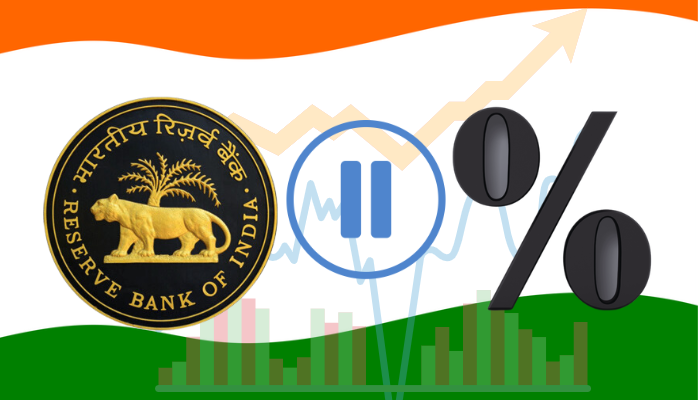An important development was the pausing of tightening monetary policy by The Reserve Bank of India (RBI). The Monetary Policy Committee (MPC) maintained the repo rate at 6.5% in its latest meeting on April 6, 2023.
This was slightly unexpected and shows that RBI is now giving growth as much importance as controlling inflation. This move makes the prospects for Indian markets more optimistic. There was an immediate effect on long-term bond yields which fell to 7.2% and the equity index Nifty 50 moved up close to 17600.
Additionally, RBI has revised upwards its GDP growth forecast for FY 2023 to 6.5% while lowering its inflation forecast to 5.2%, well within its targeted range of 4-6%. Though the RBI Governor indicated that this is a pause and not a pivot, the probability remains high that the rates are likely to remain stable, giving one more fillip to Indian growth projections.
One very important positive factor for India is its relative economic performance and this move makes it even more apparent. While other central banks are struggling with the difficult balancing act of controlling inflation and at the same time tackling the problems of their banking system, RBI has been able to show a lot more flexibility with its approach, primarily because of the strength of the Indian banking system.
The recent economic figures also portend strength. High-frequency indicators including GST collections, power demand, consumer confidence, and passenger vehicles are showing healthy growth. Even rural consumption which had slowed down considerably because of Covid is showing early signs of revival.
Valuations of the Indian market are a lot more reasonable presently and that makes it easier for them to turn around. The Indian market was at 18600 in October 2021 and because of the tightening conditions, has gone through a significant time and price correction during the last one and a half years. That has brought down the price-earnings valuation ratios close to their 10-year averages.
Just to restate, as written in my earlier article, several long-term structural factors, including demographics, deglobalization, decarbonization, digitization, and a large domestic market are contributing to India’s long-term growth potential and those still remain intact. Equity markets have a strong correlation with economic growth, and with the current favorable conditions, it is highly likely that the Indian market will experience an upward movement.
Overall, it is my considered opinion that these current levels offer an attractive buying opportunity for your goals with a time horizon of 3 years or longer. The best way to express this view will be through highly regarded diversified equity schemes. We should always be aware of the risks and it is always possible for markets to experience temporary dips. Also with the global uncertainty, some part of our portfolio should always be invested in high-quality short-term debt funds to take care of liquidity and any contingencies.






